
If you are searching for “Ways To Save Energy” this article is for you. One of the largest bills for a lot of people is the electricity bill, especially in the summer in hot areas of the United States like Arizona.
Topics Covered On This Page:
- Inspecting Attic Insulation
- Insulation Performance Chart
- Checking Wall Insulation
- How To Check For Air Leaks
Electricity is used to power our air conditioning units and when summer temperatures reach and stay near the 100 degree mark it takes an enormous amount of energy to keep homes and businesses comfortable. It takes even more energy when your insulation is worn out, settled, or simply was not installed in the first place. In this article we show you how to evaluate the insulation in your home and even look for air leaks that are costing you money.
Inspecting Attic Insulation
Your attic is the primary barrier between the elements and the comfort of your home. Having properly installed, sufficient insulation, that is in good condition means a big difference. In fact some studies show that the difference quality insulation makes in the cost to heat and cool homes can be as much as 40%.
How Do I Know If I Need It?
Symptoms of attics that need some attention to insulation are high cooling or heating bills, rooms that are drafty, or ceilings, walls, or entire rooms that are excessively warm or cold depending on the season.
How Do I Check?
Some of your insulation is hidden in behind sheetrock inside your walls, but the insulation in your attic is usually pretty easy to evaluate. Older types of insulation settle or breakdown over time and are no longer effective insulators.
Visual Check
One way a lot of homeowners check to see if their attic insulation is still good is to see if it has settled between the attic floor joists. If you can see a significant part of the joist sticking up out of the layer of insulation you should probably call in the pros and have your home checked out.
Measure Insulation
Another more scientific way to figure out your insulation situation is to measure the batts, loose fill, or whatever type of insulation you have. Using a measuring tape you should try to accurately measure your insulation in inches and follow the table below to get an idea of what condition your insulation is in.
Insulation Performance Chart
Measure your insulation thickness and compare the type of insulation and the measurement to figure out your R-value. For example if you have 2×8 floor joists in your attic and only have 4 inches of cellulose you can estimate that your attic’s R-value is 14.8.
| What You Can See | Type of Insulation | Depth (inches) | R-Values | ||
| Batts | Light Weight – pink, yellow, or white | Fiberglass | Measurement | 3.2/in | |
| Granules | Light Weight | Vermiculite | Measurement | 2.7/in | |
| Loose Fibers | Light Weight – pink, yellow, or white | Fiberglass | Measurement | 2.5/in | |
| Small pieces or fibers | Cellulose | Measurement | 3.7/in | ||
| Dense Material – gray or near white | Rock Wool | Measurement | 2.8/in | ||
Most home insulation experts recommend R-38 or higher, so if you have half of that number you are certainly in need of better insulation in your home.
Checking Wall Insulation
The attic and walls are the 2 primary areas of homes that should be insulated to keep your home more comfortable without relying too heavily on your HVAC system. To check the walls your first order of business is to TURN OFF YOUR POWER. You should double check using a voltage tester or volt meter that there is in fact no current coming through the power outlet that you will need to remove to see inside your exterior walls.
- Once you are 100% sure there isn’t any power at the socket you remove the cover and use a flashlight to shine into the wall to see if there is insulation, and how thick it is.
- If you can reach some insulation, perhaps with needle nose pliers you should remove a small portion to help identify what kind of insulation is in your walls.
- Check various rooms and levels of your home, simply because one area has it is no guarantee that it is in all of the walls in your home.
Exterior walls play a large role in the thermal performance of your home in both summer and winter. Ensuring there is enough insulation and are fully filled helps ensure that your home stays cooler in summer and warmer during the winter without constantly running the AC or heat.
How To Check For Air Leaks
Even with quality insulation in the attic and walls if you have gaps and cracks in the “envelope” of your home it means that your conditioned air can escape, and outside air is getting in. Finding and sealing these air leaks will mean greater home energy efficiency and lower utility bills.
Most homes building envelope is constituted by the exterior walls, basement floor, and of course the ceiling between living spaces and the attic. You can track down air leaks with the following methods.
Crack and Gaps Visual Inspection
One of the simplest ways to find these problems areas is to look and problem areas such as the attic access hatch, registers, any piping or conduit running through the ceiling, recessed lighting boxes, or dropped soffits. Other areas you might find problems include crawl spaces, outdoor faucets, dryer vents, and vent fans in kitchens.
Shed Some Light On It
Another way to easily test if you have cracks or gaps in your envelope is to use a flashlight at night with a partner. Shine the flashlight on the areas you suspect might be a problem and if your helper outside can see the light through window or door seals; you know you have a problem. This trick also works for basements, crawlspaces, and other problem areas.
Phoenix Insulation Contractors
If you live in the Phoenix area in areas like Mesa, Gilbert, Tempe, or Chandler Barrier Insulation can help you no matter how big or small the job is. We handle both residential and commercial insulation inspections, insulation removal, and upgrading insulation. We can help fix small problems or we can help you by removing old ruined insulation and install modern and highly efficient options like spray foam insulation that both insulates and helps seal air leaks.
For help with your insulation call 602-499-2922.
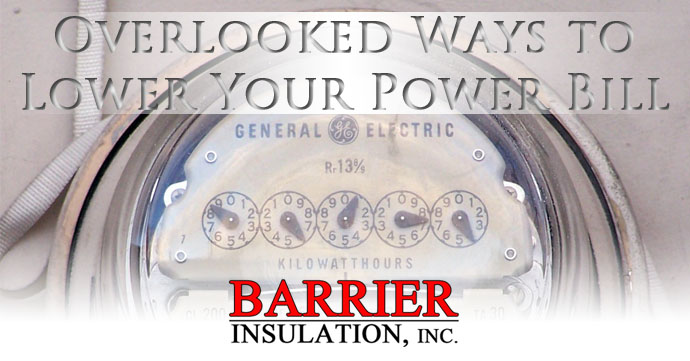
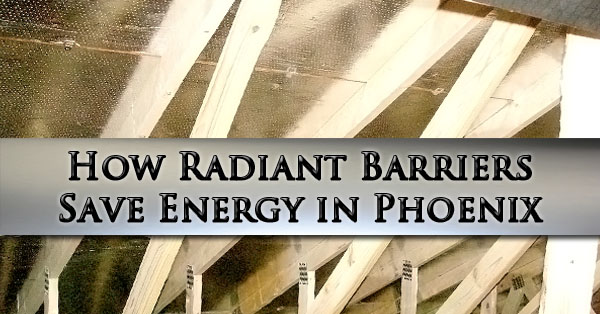


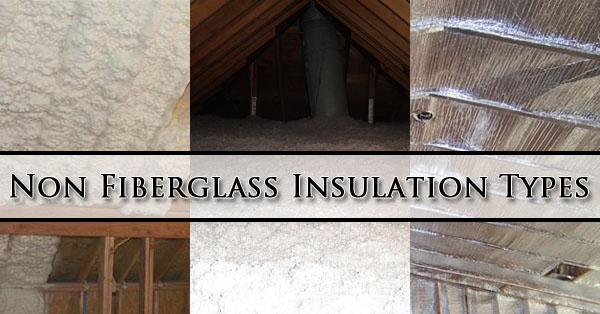


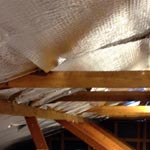

 Cellulose Insulation is comprised of nontoxic and recycled treated cardboard or newspaper, provides excellent insulation for your business or home, and costs less to install than cotton. When cellulose came out, it wasn’t that popular with homeowners because they feared that the cellulose would invite mold and critters into their home. Although, with advances in nontoxic chemicals, this type of insulation is better protected and is now flame resistant.
Cellulose Insulation is comprised of nontoxic and recycled treated cardboard or newspaper, provides excellent insulation for your business or home, and costs less to install than cotton. When cellulose came out, it wasn’t that popular with homeowners because they feared that the cellulose would invite mold and critters into their home. Although, with advances in nontoxic chemicals, this type of insulation is better protected and is now flame resistant.

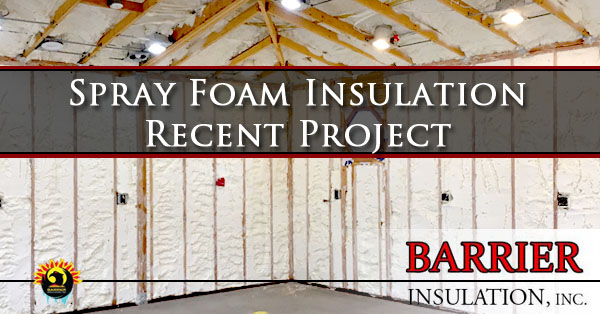
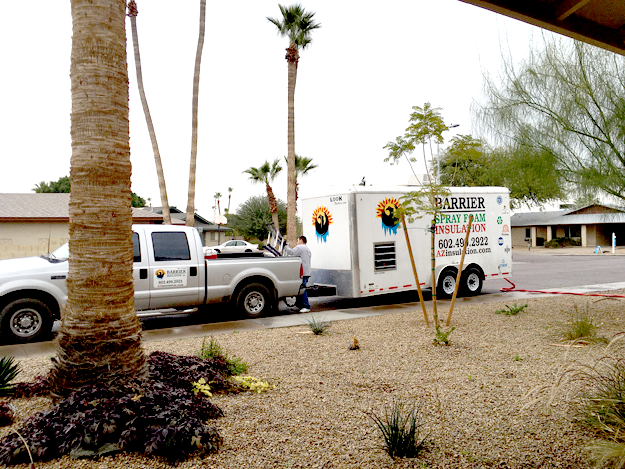
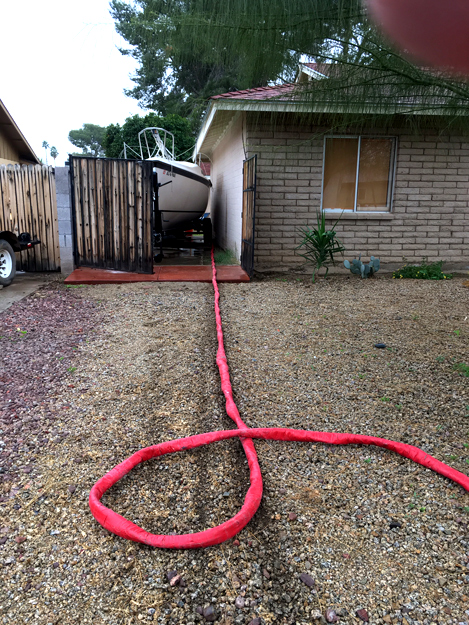
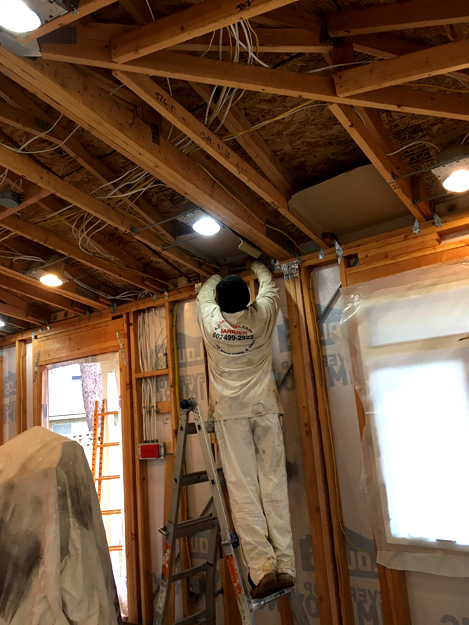
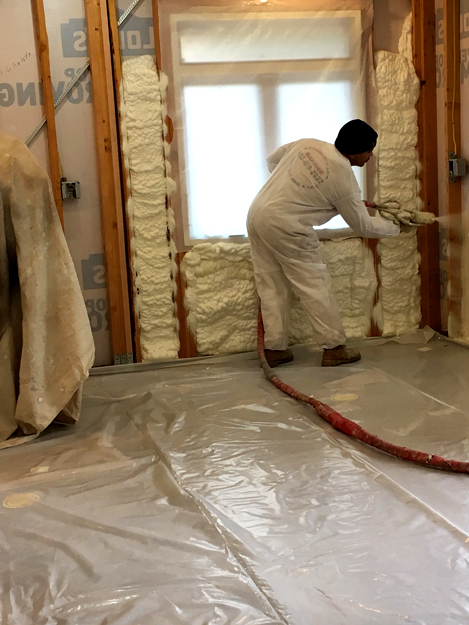
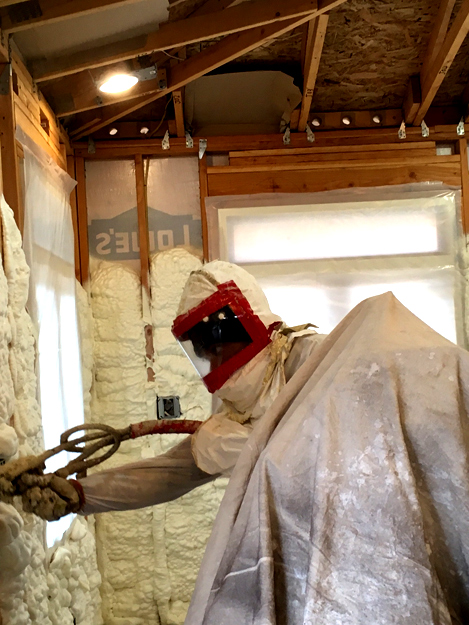


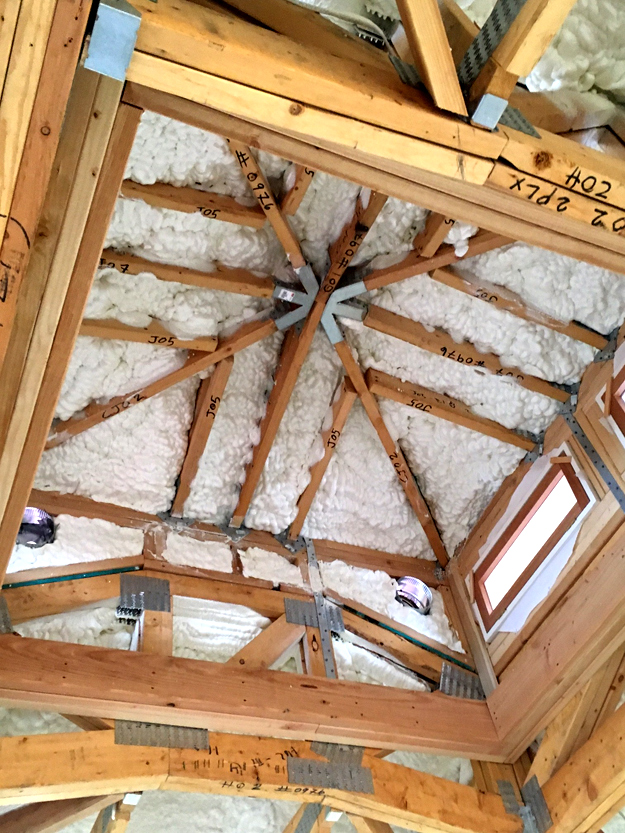
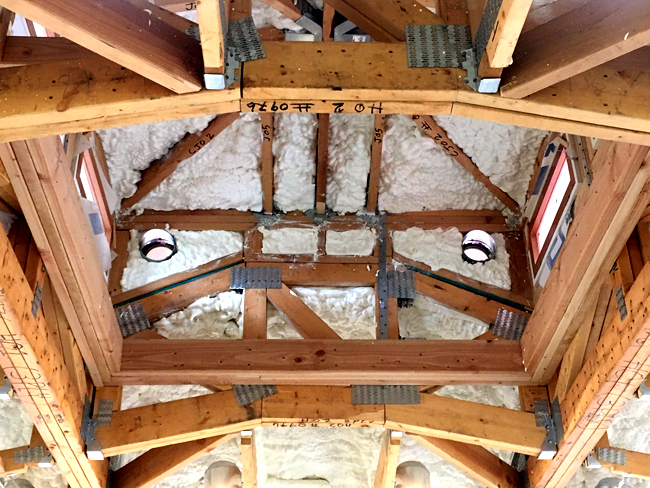

 Using a hose a machine distributes a combination of chemicals which mix together at the tip of the hose creating a paint like thick goo that sticks to everything it touches. So those wires, ducts, pipes and uneven surfaces are effectively coated and sealed up air tight.
Using a hose a machine distributes a combination of chemicals which mix together at the tip of the hose creating a paint like thick goo that sticks to everything it touches. So those wires, ducts, pipes and uneven surfaces are effectively coated and sealed up air tight. The characteristic of closed-cell spray foam is that the cells or bubbles are tightly packed together and closed. This means that closed-cell is stronger an much more dense than open-cell foam. It will not allow air or water to pass through it. This is due to the fact that the bubbles are much smaller because they are filled with a gas making them a better insulator as well. In fact closed-cell insulation tops the charts with an astounding R-7 per inch! Closed-cell spray foam is the option for the uncompromising home owner that demands the best performance from where they invest their hard earned money.
The characteristic of closed-cell spray foam is that the cells or bubbles are tightly packed together and closed. This means that closed-cell is stronger an much more dense than open-cell foam. It will not allow air or water to pass through it. This is due to the fact that the bubbles are much smaller because they are filled with a gas making them a better insulator as well. In fact closed-cell insulation tops the charts with an astounding R-7 per inch! Closed-cell spray foam is the option for the uncompromising home owner that demands the best performance from where they invest their hard earned money. A more affordable option for home owners is open-cell spray foam insulation. Its name is derived from the fact that the bubbles or cells never completely close. During expansion air gets trapped between the broken bubbles. This characteristic of open-cell spray foam means that as heat tries to pass through the foam its slowed down by billions of tiny air pockets. Because of this difference is structure it’s much softer than closed-cell spray foam. The difference in the formation of the open-cell foam means that water can pass through them, which can be a bad or good thing depending on the application. Open-cell foam rates at half the R value efficiency as its close foam competitor.
A more affordable option for home owners is open-cell spray foam insulation. Its name is derived from the fact that the bubbles or cells never completely close. During expansion air gets trapped between the broken bubbles. This characteristic of open-cell spray foam means that as heat tries to pass through the foam its slowed down by billions of tiny air pockets. Because of this difference is structure it’s much softer than closed-cell spray foam. The difference in the formation of the open-cell foam means that water can pass through them, which can be a bad or good thing depending on the application. Open-cell foam rates at half the R value efficiency as its close foam competitor.

 What Is It? Fiberglass insulation is finely spun glass fibers that are tightly packed to create a lofted material. It is then made into sheets, cut into rolls, and usually backed with paper. It is also possible to spray fiberglass as loose fill into walls. It has been, and continues to be one of the most popular insulation types there is.
What Is It? Fiberglass insulation is finely spun glass fibers that are tightly packed to create a lofted material. It is then made into sheets, cut into rolls, and usually backed with paper. It is also possible to spray fiberglass as loose fill into walls. It has been, and continues to be one of the most popular insulation types there is. What Is It? Vermiculite is a light weight material used in insulation in years past. Its appearance is shiny and looks like mineral. It is a absorbent and fire retardant material that has been used in soundproofing and even to fluff up gardening soil.
What Is It? Vermiculite is a light weight material used in insulation in years past. Its appearance is shiny and looks like mineral. It is a absorbent and fire retardant material that has been used in soundproofing and even to fluff up gardening soil. What Is It? Mineral wool is an insulation material that was popular before World War II. There are two main forms of mineral wool, slag wool and rock wool. Slag wool is a byproduct that forms on the top of molten metal. Rock wool is a bit like making cotton candy from molten rock. The strands are similar to fiberglass and are tiny intertwined fibers.
What Is It? Mineral wool is an insulation material that was popular before World War II. There are two main forms of mineral wool, slag wool and rock wool. Slag wool is a byproduct that forms on the top of molten metal. Rock wool is a bit like making cotton candy from molten rock. The strands are similar to fiberglass and are tiny intertwined fibers.

